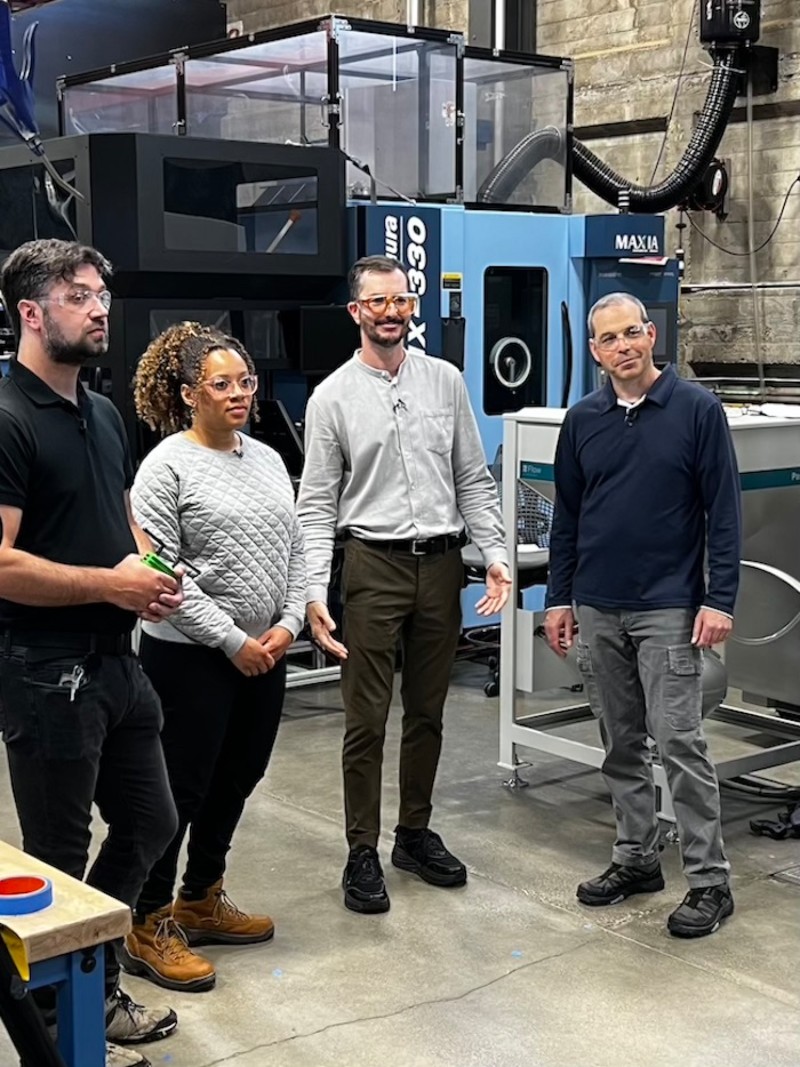In Season 2, Episode 2 of the IMTS+ Original Series “Smart(er) Shop,” brought to you by Autodesk, you’ll discover how an accessible modern digital workflow can provide big benefits to small- and medium-sized shops.
In this episode, co-host Ryan Kelly, the general manager for AMT’s San Francisco Tech Lab, visits Adam Allard, senior manager of technical environments at Autodesk Research, where he oversees Autodesk Technology Centers in Toronto, San Francisco, and Boston. Kelly calls on Allard in the shop at “Pier 9,” officially known as the Autodesk Technology Center in San Francisco. The shop uses many of the same CNCs found in industry for its applied technology research, and two of Allard’s team members explain the benefits of a connected shop.
Collisions Are Inevitable – or Not?
With the world at an inflection point where implementing digital technology is easier than ever, the Autodesk team demonstrates the risk of clinging to a traditional workflow, such as a sticky note with the post processor written on it or transferring data with a USB. That workflow doesn’t communicate anything about the machine setup, the fixtures, the tools, the part, or its orientation. Hoping all the data gets manually entered correctly is not the best strategy and will likely lead to damaged tools, spindles, scrapping parts, or worse.
“If you have a fleet of similar but not identical machines, it’s only a matter of time before you accidentally load a setup for machine one into machine two, and then welcome to collision city,” says Orion Beach, CNC machine shop supervisor at Autodesk Technology Center in San Francisco.
It’s Like a Printer Driver
When it comes to a Smarter Shop, software, such as Fusion 360, is the foundation, because it allows an operator to select an output folder, select a post processor, and then export data for tools, part, fixture, and stock with simple clicks (it’s similar in spirit to a printer driver). Further, communication between the machine and the software allows an operator to run simulations to verify the set-up, preventing such mistakes as selecting the wrong tool.
Most importantly, a digital workflow can save 20 minutes to several hours on a single setup, thus improving margins and allowing more competitive bidding for smaller shops.
“Large manufacturers also benefit,” adds Alana Mongkhounsavath, strategic relationship development manager at Autodesk Research. “In my experience, I had to do Gemba walks to make physical rounds and physically collect data. With a connected shop, some of that data is already on my PC.”
To end the episode, the team summarizes how to connect a shop in four simplified steps and shows a plug-and-play solution that allows a small shop to get connected using a cellular modem — and take a hard pass on the sticky notes and USBs.
Season 2 of “Smart(er) Shops” offers solutions for cybersecurity in Episode 1 Part 1 and Part 2 (no IT experience required for some of these solutions), and the team explores a low-cost “robots-as-a-service” solution for a vexing QC scenario in Episode 3. Watch all episodes at IMTS.com/SmarterShop.





